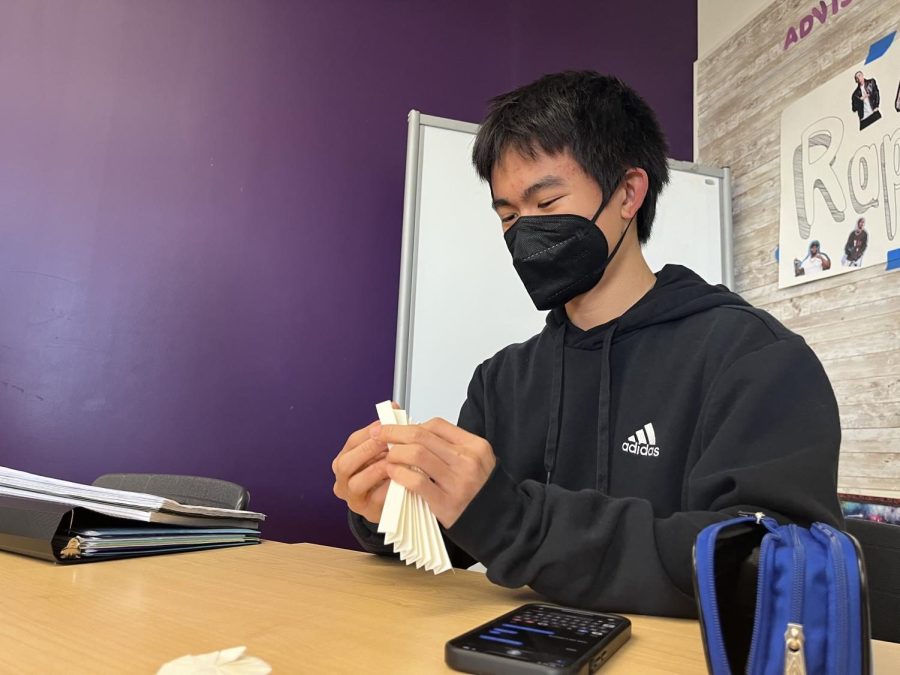Sophomore Viget Vuong Finds Comfort in Origami
The dinosaur’s legs are spread shoulder-width apart in a menacing stance — its fierce nature shows no sign of fear. But the creature’s strong build and elongated tail are in fact made from a single sheet of paper.
When sophomore Viget Vuong attended elementary school in Japan, this origami dinosaur — along with many other origami creations — was his way of coping with his loneliness as a shy student. Each night, he would watch a TV show centered around origami, sparking his passion for the art.
“I was the type of kid who didn’t really talk much,” Vuong said. “I usually fidgeted with objects such as origami… For me, playing with origami helped me, since it didn’t feel like I’m alone.”
Origami was not only a coping mechanism for Vuong. Through the art, he was able to learn perseverance; one of his favorite creations is an origami magic ball, which took him two years to perfect.
“You can’t make anything perfect out of origami,” Vuong said. “That’s the most frustrating part of origami. But origami is meant to be not perfect.”
After immigrating to the United States from Japan, it was hard to comprehend American culture as Vuong did not understand English. Yet Vuong’s passion for origami had a surprising use — it also helped him learn the language.
“There’s this YouTuber [JeremyShaferOrigami],” Vuong said. “I think he was very good at teaching. When I first came to the U.S., I watched him immediately because not only did he do origami guided, he also spoke simple English that people can understand.”
Even after the origami trend in Japan faded, according to Vuong, he continued to perfect his craft, finding newer and harder creations to try his hand at.
“I never got bored of origami,” Vuong said. “I think origami is rewarding once you finish your project, but not many people believe that it’s a reward because it’s just paper. For me, I think it’s a reward because you can make something that takes up a lot of time.”
Your donation will support the student journalists of Portola High School. Your contribution will allow us to purchase equipment and cover our annual website hosting costs.

Cara Chan is the Features Editor and Business Manager for her third year on the Portola Pilot. Though she’s feeling bittersweet about her final year,...




